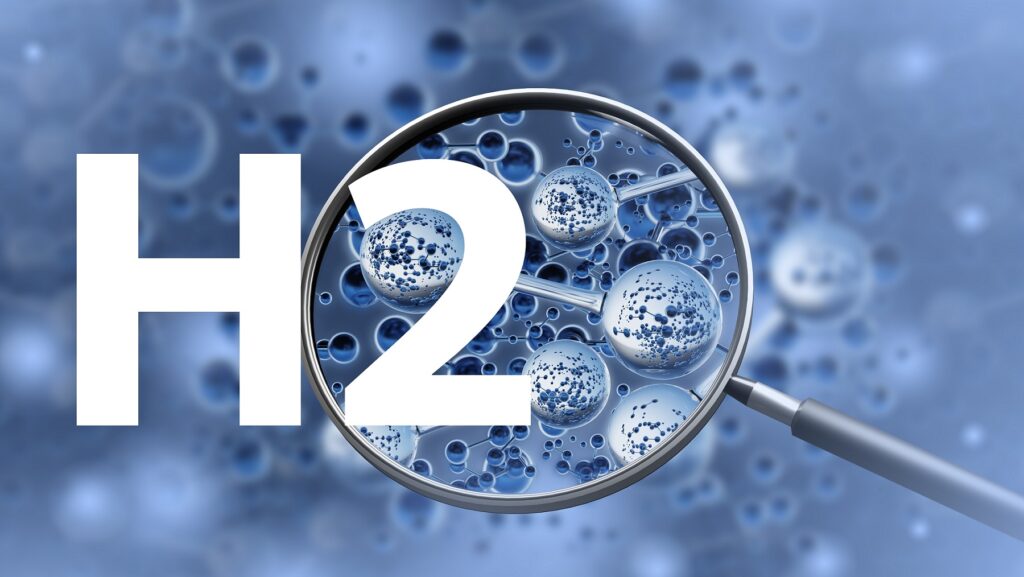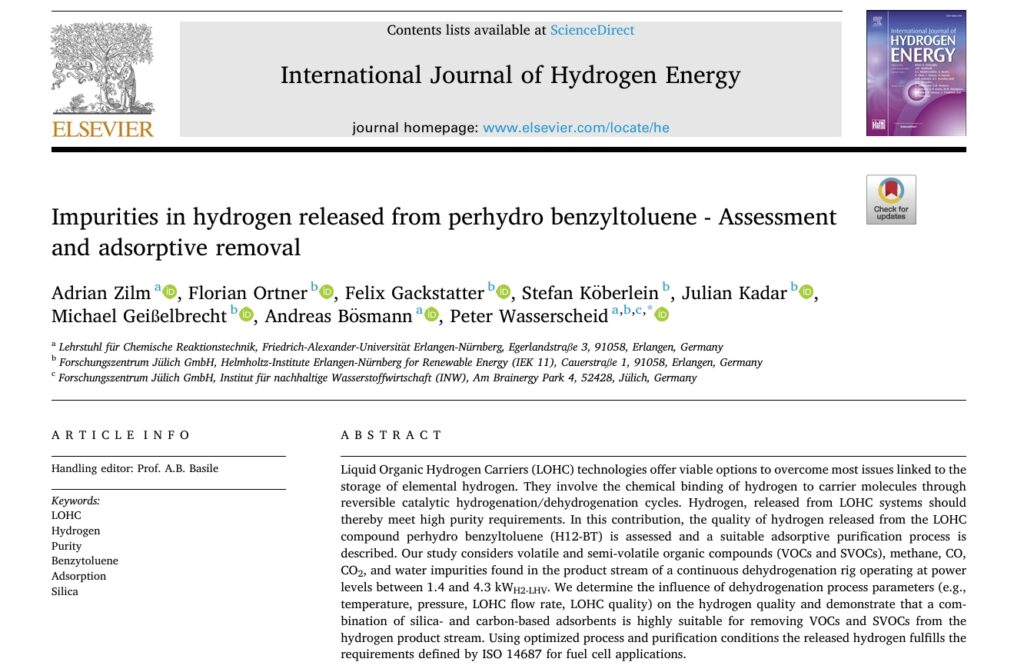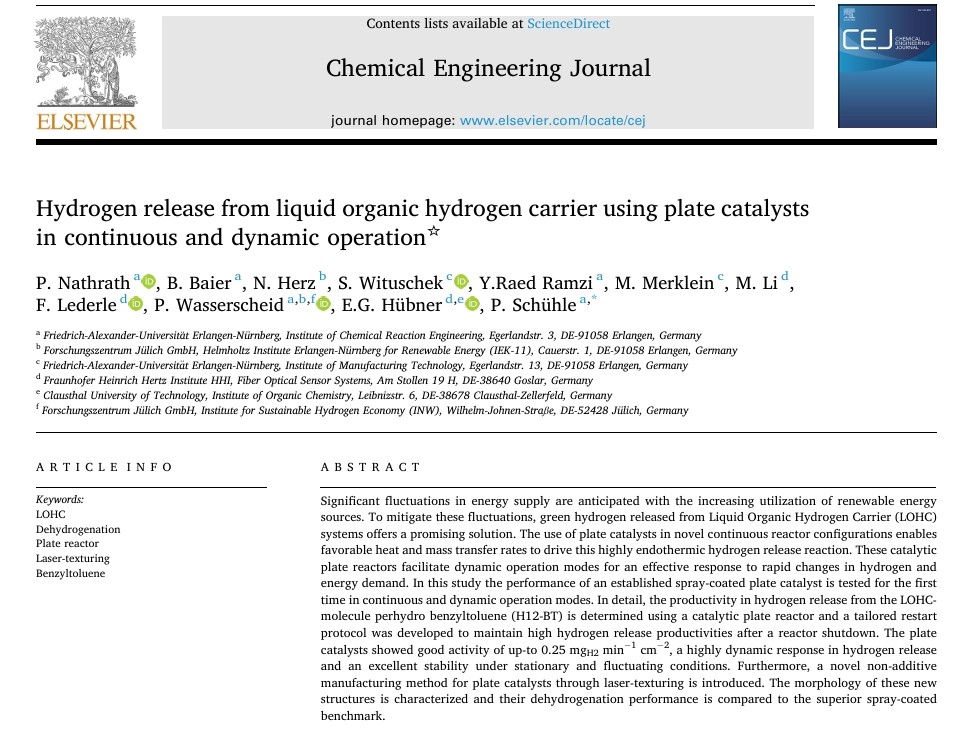Two recently published papers by the Ship-aH2oy research team mark a milestone on the project’s journey toward enabling cleaner shipping with green hydrogen from LOHC.
Ship-aH2oy aims to demonstrate zero-emission shipping operations using hydrogen released from a liquid organic hydrogen carrier (LOHC) in combination with fuel cell technology. One challenge is that hydrogen fuel cells typically demand top-tier purity. Can the proposed LOHC technology based on perhydro benzyltoluene (H12-BT) as carrier medium match these strict standards?
This topic was addressed in a recent study by a research team led by the Friedrich-Alexander Universität Erlangen-Nürnberg. Their results were recently published in the International Journal of Hydrogen Energy. Some key highlights:
- Carbon monoxide (CO) impurities can be handled through optimized operation conditions of LOHC dehydrogenation.
- Volatile organic compounds (VOC) and semi-volatile organic compounds (SVOC) can be removed by a regenerable adsorber.
- Different adsorption methods were tested; activated carbon proved best for VOCs, while silica gel was found to be particularly suitable for tackling SVOCs.
- Based on these findings, a new adsorber concept for the LOHC process was proposed and tested, with promising results.
Efficient hydrogen release with plate catalysts
In another study published in Chemical Engineering Journal, researchers developed an innovative catalytic plate reactor for LOHC dehydrogenation. Their goal was to address one of renewable energy’s biggest challenges – supply fluctuations.
Highlights:
- Catalytic plate reactor enables continuous and dynamic hydrogen release from LOHC.
- Excellent heat and mass transfer in LOHC dehydrogenation with plate catalysts.
- Highly robust and active plate catalysts in steady-state and dynamic operation.
- Novel laser-textured plate catalysts are compared to spray-coated benchmark.
- Tailored restart protocol maintains high productivity after reactor shutdowns.
The authors conclude that their work with H12-BT as LOHC-molecule shows particularly promise for creating hydrogen buffers that can smooth out renewable energy fluctuations. The combination of excellent thermal management and novel catalyst structures opens new possibilities for sustainable energy infrastructure.
Important steps toward realising zero-emission technology
Taken together, these results provide a strong foundation for the further development and demonstration of a safe and scalable solution for zero-emission power generation onboard ships using LOHC and fuel cell technology.
The project aims to demonstrate this technology onboard a commissioning service operation vessel (CSOV) by 2027, enabling zero-emission operations in the offshore wind sector.
References
Phillip Nathrath et al. 2025. Hydrogen release from liquid organic hydrogen carrier using plate catalysts in continuous and dynamic operation. Chemical Engineering Journal. DOI: https://doi.org/10.1016/j.cej.2025.159878
Adrian Zilm et al. 2025. Impurities in hydrogen released from Perhydro benzyltoluene – Assessment and adsorptive removal. International Journal of Hydrogen Energy. DOI: http://dx.doi.org/10.1016/j.ijhydene.2024.12.204



